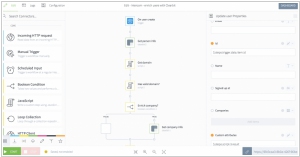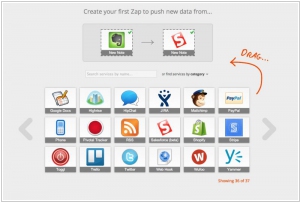Tray.io vs Zapier
May 17, 2023 | Author: Michael Stromann
Tray.io and Zapier are both popular automation platforms that enable users to connect and automate workflows between different applications and services. Tray.io is a powerful integration and automation platform that offers advanced workflow capabilities, data transformation, and complex logic. It provides a highly flexible and customizable solution, allowing users to build intricate workflows with conditional logic and data manipulation. On the other hand, Zapier is a user-friendly automation tool that focuses on simplicity and ease of use. It offers a wide range of pre-built integrations called "Zaps" that connect apps and automate tasks without the need for coding. Zapier caters to users who want to set up straightforward, one-to-one connections between applications.
See also: Top 10 Cloud Integration software
See also: Top 10 Cloud Integration software
Tray.io vs Zapier in our news:
2023. Zapier launches Canvas, an AI-powered flowchart tool
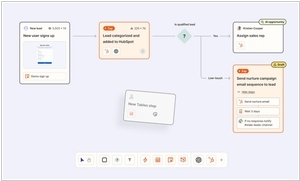
Zapier has unveiled Canvas, a innovative tool designed to assist users in planning and visualizing their crucial business processes. The tool combines intuitive visual diagramming features with AI capabilities to aid users in transforming their processes into Zapier-based automations. Canvas serves as a comprehensive platform where users can map out their processes from start to finish, and even modify the elements connected to Zapier directly within the interface. Notably, Zapier envisions expanding Canvas's functionality to allow users to edit any components, whether or not they are linked to Zapier, directly within the tool. In essence, Canvas functions as both a basic flowchart diagramming tool for process documentation and as an interface for editing the connected components. Additionally, Zapier has made Tables, its automation-focused database service, available to all users, further enhancing its automation capabilities.
2021. Zapier buys no-code-focused Makerpad
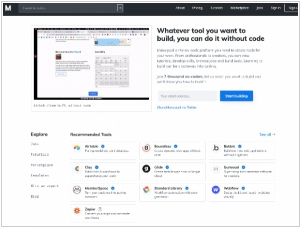
Zapier, a renowned no-code automation tool, has acquired Makerpad, an educational service and community focused on no-code development. The no-code sector, along with its related field of low-code development, has been vibrant in recent times. The low-code market has witnessed significant funding rounds, with some companies adopting low-code tools to expedite internal software development. In the no-code realm, Zapier stands as a notable success with its impressive revenue figures reaching nine digits.
2019. Tray.io brings in $50M for its workflow automation tools
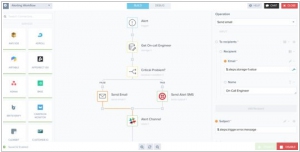
Tray.io, a company that has developed a versatile workflow automation platform, has successfully raised $50 million in funding. The platform utilizes a user-friendly graphical interface, empowering individuals to integrate APIs between multiple applications and create innovative ways of working with data across them. Tray.io initially began with a limited number of integrations, primarily focused on email-related functionalities. For instance, users could import data from Mailchimp into Slack to track email marketing campaigns. However, the company has expanded its offerings significantly and now provides integrations for approximately 400 applications. Tray.io serves a wide range of customers, from small startups to industry giants like IBM, and continues to experience growth in its user base.
2017. Zapier added shared folders for teams
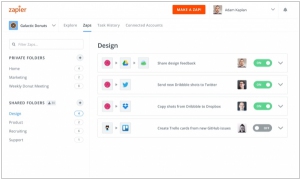
The cloud app integration service Zapier has introduced shared folders, enabling teams to collaborate and automate tasks collectively. These shared folders facilitate access to a shared collection of Zaps, allowing teammates to collaborate and construct more robust workflows. With an individual Zapier account, users can create automated workflows called Zaps that connect multiple apps. However, until now, it was not possible to share these innovative workflows with colleagues. Shared folders eliminate this limitation by enabling collaboration. Anyone with access to a shared folder can modify and enhance the Zaps within it, or even duplicate them for their own utilization. Furthermore, we have incorporated an option to share accounts for other tools, such as Dropbox, Pipedrive, and Typeform. This eliminates the need to create separate logins for each team member.
2017. Zapier launched team accounts
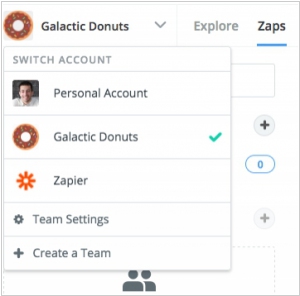
Zapier, a platform that specializes in connecting applications and automating workflows, has introduced a new offering called Zapier for Teams. This plan, priced at $250 per month, complements Zapier's existing free and $20/month tiers and incorporates several collaborative features into the service. With Zapier for Teams, businesses can now grant their employees access to Zapier while managing a single consolidated bill. The implementation of this plan also enhances security measures by allowing companies to easily add and remove user accounts as needed. Previously, under Zapier's previous pricing tiers, employees would often resort to sharing passwords, which was far from an ideal solution. With Zapier for Teams, companies can foster improved security practices and enjoy the benefits of streamlined collaboration within their organization.

